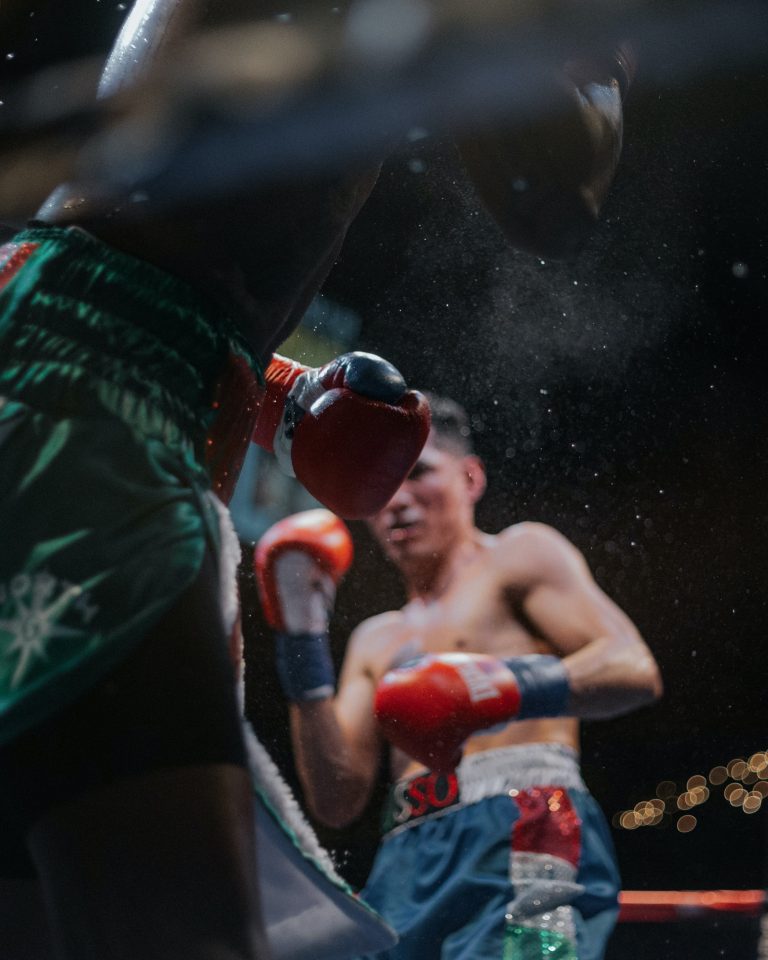What Do the Different Color Belts Mean in Karate?
Karate is a martial art that originated in Japan in the early 20th century. It has since spread to every part of the world and is now practiced by millions of people of different ages and skill levels. One of the unique aspects of karate is its ranking system, which is based on the colored belts that a practitioner wears. In this post, we’ll take a closer look at what the different color belts in karate represent and what it takes to earn them.
The Origin of the Belt System in Karate
The belt system in karate was first introduced by Jigoro Kano, the founder of judo, in the late 19th century. Kano implemented a system of colored belts to signify rank, with white belts representing beginners and black belts representing experts. The color of the belt would indicate a practitioner’s level of experience and proficiency in the art. This system was later adopted by other martial arts, including karate.
The Various Color Belts in Karate
There are several color belts in karate, each indicating a different level of proficiency. The specific colors and their meanings may vary slightly depending on the style of karate being practiced, but generally, they follow the same patterns. Below are the most commonly used colors and what they represent:
White Belt
The white belt is the beginner’s rank in karate, and it is the starting point for any practitioner. It represents purity, innocence, and the beginning of a journey. White belts are expected to learn the basic techniques of karate and demonstrate proper form and execution under the guidance of an instructor.
Yellow Belt
Yellow belt is the first rank a student can achieve after the white belt, and it represents a level of proficiency in the basic techniques of karate. At this stage, the practitioner is expected to have a good understanding of the basic techniques, such as punches, kicks, and blocks, and their application in a self-defense situation.
Orange Belt
The orange belt is the next rank after yellow belt, and it signifies a higher level of proficiency in karate. At this stage, the practitioner is expected to have a deeper understanding of the techniques and principles of karate and be able to apply them in a more advanced setting.
Green Belt
The green belt is the rank achieved after the orange belt, and it represents a significant level of proficiency in karate. At this stage, the practitioner is expected to have a high level of proficiency in the basic techniques and be able to apply them effectively in a self-defense situation.
Blue Belt
The blue belt is the next rank after the green belt and represents advanced proficiency in karate. At this stage, the practitioner is expected to have a deep understanding of the techniques and principles of karate and be able to apply them effectively in a variety of settings.
Purple Belt
The purple belt is the rank achieved after the blue belt and represents expert proficiency in karate. At this stage, the practitioner is expected to be highly skilled and knowledgeable in the art of karate and be able to teach and pass on their knowledge to others.
Brown Belt
The brown belt is the last rank before reaching the coveted black belt in karate. It represents a high level of proficiency in the art and is awarded to practitioners who have reached an advanced level of proficiency in the basic techniques and are now exploring more advanced techniques and principles.
Black Belt
The black belt is the highest rank in karate and represents mastery of the art. It is awarded to practitioners who have demonstrated exceptional skill and knowledge of the techniques and principles of karate and have reached a level of proficiency that enables them to teach and pass on their knowledge to others.
Earning Your Karate Belts
To earn a colored belt in karate, a practitioner must meet certain requirements set forth by their dojo or martial arts organization. These requirements typically include a demonstration of proficiency in the basic techniques of karate, such as punches, kicks, and blocks, as well as an understanding of the principles and philosophy of the art.
Practitioners are evaluated by their sensei or instructor and are required to participate in a grading exam, in which they demonstrate their skills and knowledge in front of a panel of judges. The grading exam may include sparring, kata (a series of predefined movements), and techniques demonstrations.
The Significance of Karate Belts
The colored belt system in karate serves several purposes. First, it provides a way to measure a practitioner’s level of skill and proficiency in the art. Second, it helps to motivate practitioners to continue their training by giving them tangible goals to strive for. Finally, it provides a sense of pride and accomplishment for those who have worked hard to achieve their ranks.
What Do the Different Color Belts Mean in Karate?
Karate is one of the most popular forms of martial arts in the world. It is a highly structured art form that features a ranking system that is represented by different colored belts. These belts signify a student’s progress and skill level within the karate system. Below are some frequently asked questions about the color belts in karate.
What is the history of the karate belt system?
The origins of the karate belt system can be traced back to the founder of modern karate, Gichin Funakoshi. Funakoshi introduced the belt system to help organize and structure the learning process for his students. The system consisted of two colored belts: white belt for beginners and black belt for advanced students.
The belt system was later expanded to include additional colors to represent intermediate levels of achievement. The use of belts of different colors allowed for more detailed recognition of a student’s progress, skill level, and expertise in the art form.
What are the different colors of karate belts?
The traditional karate belt system consists of the following colors, in sequence from beginner to the highest ranking:
– White Belt: This is the starting rank for all beginners. It symbolizes purity and innocence, as the beginner has no knowledge or skill in karate.
– Yellow Belt: This is the first colored belt and signifies the transition of the beginner’s mind from one of innocence to one of knowledge. It also represents the sun rising and the light beginning to shine on the student’s abilities.
– Orange Belt: This belt represents a stage of growth and expansion for the student.
– Green Belt: The green belt signifies growth and maturity. The student has gained a deeper understanding of karate and has begun to hone their skills.
– Blue Belt: This belt symbolizes the sky and the limitlessness of the student’s potential.
– Purple Belt: The purple belt signifies the bridge between the lower and higher ranking belts. It represents the student’s refinement and dedication to their craft.
– Brown Belt: This belt represents the student’s mastery of the lower-ranking belts and their preparedness to move on to more advanced levels.
– Black Belt: This is the highest-ranking belt and is reserved for students who have dedicated themselves to the art of karate. It represents a deep understanding of the art form and the ability to teach and lead others.
What is the significance of the black belt?
The black belt is the most well-known and recognized belt in karate. It is often perceived as a symbol of mastery and expertise in the art form. However, the significance of the black belt goes beyond just skill and knowledge.
The black belt represents a student’s commitment to karate and their sense of responsibility to the discipline. It represents leadership, mastery, and the ability to guide and teach others in the art form. Earning a black belt requires years of dedicated practice, study, and personal growth.
How long does it take to earn a black belt in karate?
The amount of time it takes to earn a black belt in karate varies depending on the individual, the style, and the dojo. The average time it takes to earn a black belt is around 3-5 years of dedicated practice and training. Some dojos have more accelerated programs, while others follow a slower, more traditional approach.
The most important thing to remember is that earning a black belt is not just about the amount of time spent training, but also about the level of dedication and commitment to the art form.
Do all karate schools use the same belt system?
Not all karate schools use the same belt system. Some schools may use a variation of the traditional karate belt system, while others may have unique ranking systems. It is important for students to understand their school’s ranking system and how it relates to the broader karate community.
Can someone study karate without a belt?
Yes, someone can study karate without a belt. The use of colored belts is not mandatory, but they do provide a structured way to measure progress and skill level. Some karate schools may choose to forego the traditional belt system in favor of other forms of recognition or may use a more informal approach.
What do the Different Color Belts Mean in Karate?
Karate is a popular martial art and is known for its use of colored belts to indicate skill level. These colored belts are called „kyu“ in Japanese and show the practitioner’s progress in the karate system. In this article, we will discuss what the different color belts mean in karate and what each level signifies in terms of skill.
The White Belt
The white belt is the starting point for all karate practitioners. It signifies a beginner level and denotes the student’s purity and innocence. At this level, the practitioner is typically taught the basics of karate, such as stances, strikes, and blocks.
The Yellow Belt
The yellow belt is the first level of advancement and shows that the student has developed a basic understanding of karate techniques. At this level, the student can generally perform basic blocks, punches, kicks, and combinations with some proficiency.
The Orange Belt
The orange belt indicates that the practitioner has progressed beyond the basic level and is now considered an intermediate student. At this level, students are expected to have a good understanding of karate techniques and have developed some martial arts skills.
The Green Belt
The green belt signifies growth and development, both personally and within the karate system. At this level, the student has achieved a sufficient level of expertise in the basic techniques and has begun to develop a sense of mastery over them.
The Blue Belt
The blue belt is a significant advancement and indicates that the practitioner has a deep understanding of karate techniques and has achieved a high degree of proficiency. At this level, students are expected to have refined their basic techniques and have developed a deeper understanding of advanced techniques.
The Brown Belt
The brown belt is the second to last level before the coveted black belt. It symbolizes maturity and stability in the student’s karate practice. At this level, the practitioner has refined their techniques to a high degree, and their movements are fluid and precise.
The Black Belt
The black belt is the highest level of achievement in karate and denotes mastery and expertise in the art. To achieve black belt status, a student must complete years of rigorous training, undergo a grueling testing process, and demonstrate proficiency in all aspects of karate.
Conclusion
In summary, the different color belts in karate indicate a student’s proficiency level and progression through the martial arts system. From the beginner white belt to the expert black belt, each color signifies a level of growth, development, and proficiency. Practicing karate requires discipline, perseverance, and dedication, and students must work hard to progress through the ranks and achieve the ultimate goal of obtaining a black belt.
Inhaltsverzeichnis






